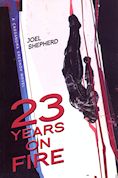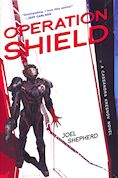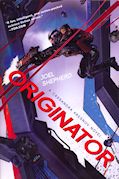Cassandra Kresnov is a synthetic person, a super-soldier, templated from a human, but brainwashed and moulded to fight in the war for the League against the Federation. But she is a special model, more intelligent, more creative, than the regulars. She comes to realise that as the war finishes, the League will have no use for her kind. When her whole team is wiped out in an "incident", she goes AWOL, and moves to the Federation, in search of a new life. She just wants to be an ordinary human civilian, but her past soon catches up with her.
This is a fun romp of slam-bam action, tricksy multi-sided politics, debates about what it means to be human, and loving lingering descriptions of a huge city. Sandy is on one hand a superior being, being ultra strong, ultra fast, and highly intelligent. On the other hand, she is very young, only 14 years have passed since she was created, and most of that time has been spent at war. It's interesting to watch her grow, to see her coming to terms with her differences, and to see the reactions of the ordinary humans she has to work with. And there's lots of descriptions of the huge city.





